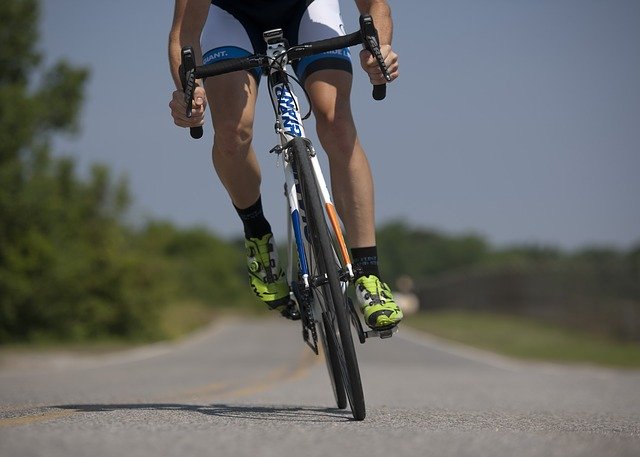
Are you planning on competing in your first bike race? If so, you’re probably both excited and a bit overwhelmed. Racing requires a different preparation than regular riding, and it can be challenging to know where to start.
To help make the process easier, check out BikeChain, here are five training tips to get you race-ready and give yourself the best chance of success! Read on to learn more about pre-race preparation and what you need to do to ensure you’re in top form when it’s time to hit the starting line.
Increase Your Mileage Gradually
When preparing for a bike race, it is essential to increase your mileage gradually. This will ensure that you are building your endurance safely and healthily. Try adding 5-10 miles per week to your rides and keep in mind the distance of your race. If the race is long, you will need to train longer than if it were a shorter distance.
When increasing your mileage, incorporate rest days into your schedule. This is critical for allowing your body to adjust to the increased strain and preventing injuries. Mixing up your routes to gain different perspectives on the terrain and work for other muscle groups is also beneficial.
By adding miles in a controlled manner, you can increase your endurance and prepare your body for race day. Making sure you take rest days and adjust your training accordingly is essential to getting race-ready.
Incorporate Interval Training
Interval training is an essential part of preparing for any bike race. This training helps you increase your cardiovascular fitness and muscle strength, which is necessary for racing.
There are several ways to incorporate interval training into your regular cycling routine. You can make sprints on flat surfaces or hills, timed intervals where you cycle as fast as possible for a set amount of time, or even specific drills where you focus on different aspects of your ride, such as increasing your cadence or maintaining a high power output.
Whatever type of interval training you choose, always warm up and cool down properly before and after each session. This will help you prevent injury and maximize the benefits of your workout.
Join or Create a Cycling Club or Team
If you want to get the most out of your bike race training, it’s important to join or create a cycling club or team. Not only will it give you an additional support system to help you prepare for the race, but it will also provide you with the opportunity to interact and learn from other cyclists.
Being part of a cycling club or team can also give you an extra competitive edge. Training alongside like-minded cyclists will surely motivate and push you in a way that solo training may not be able to do. You’ll also have a team of people to draw from for advice and tips, giving you a significant advantage in improving your skills.
If there’s no cycling club or team in your area, you can always create one! Setting up a group is easy, and you’ll be able to decide how frequent and intense your rides should be. You could plan for group rides that range from long-distance casual rides to intense sprints and intervals. It’s a great way to stay motivated, share ideas, and train together.
Stay involved no matter what kind of cycling club or team you join! Becoming an active participant in the group will help you stay focused and motivated, ultimately helping you be more successful when it comes time to race.
Train in Different Weather Conditions
When training for a bike race, getting accustomed to riding in different weather conditions is essential. Whether it’s blazing hot summer days or chilly winter mornings, being prepared for any weather is necessary for your success on race day.
It’s a good idea to plan out rides that involve different terrain and weather conditions to become comfortable with all types of riding. If you usually ride in cooler temperatures, consider taking some rides when it’s warmer out. If you’re more of a fair-weather cyclist, consider scheduling a few passages in rain or snow.
By training in varying climates and weather, you can get more accustomed to the conditions that may be present on race day. Make sure to dress appropriately for each weather condition and be prepared to adjust your gear if needed.
Also, be sure to keep hydrated no matter what the temperature is outside. You don’t want dehydration to cause your performance to drop off during the race.
You can be confident and prepared on race day by taking the time to train in different weather conditions. You’ll know how to handle various riding conditions, allowing you to focus on the race ahead.
Get a Professional Bike Fit
If you’re preparing for a bike race, getting a professional bike fit is one of the most important things you can do to ensure success. This process involves an experienced fitter measuring your body dimensions and assessing your current bike setup to determine the best position for your frame and saddle. By taking the time to get a proper fit, you can reduce the risk of injury and optimize your performance.
A professional bike fit will typically involve the following steps:
● Measuring Your Body Dimensions: The fitter will take precise height, leg length, and arm length measurements. These measurements will determine the best frame size for your body and the most comfortable riding position.
● Adjusting Your Bike Components: Once your frame size has been determined, the fitter will adjust components like your handlebars, stem, seat post, and saddle to ensure they are optimally positioned.
● Setting Up Cleats: If you use clipless pedals, the fitter will ensure your cleats are appropriately adjusted to have the right amount of float and no knee pain or discomfort while pedaling.
● Evaluating Positioning: The fitter will evaluate your current bike setup in terms of reach and stack and make any necessary adjustments so that you can ride with a more efficient posture.
Investing in a professional bike fit can improve your comfort and performance and give you the best chance for success in your upcoming race. It’s important to note that a bike fit isn’t a one-time thing—as your body changes, you may need to return for further adjustments.
Conclusion
Training for a bike race is no easy feat, but if you’re committed and willing to do the work, you can achieve your goals. By gradually increasing your mileage, incorporating interval training, joining or creating a cycling club or team, training in different weather conditions, and getting a professional bike fit from BikeChain, you will be well on your way to race-readiness. Take your time and be consistent with your training, and you’ll be ready for the big day. Good luck!
Tags: cycling


